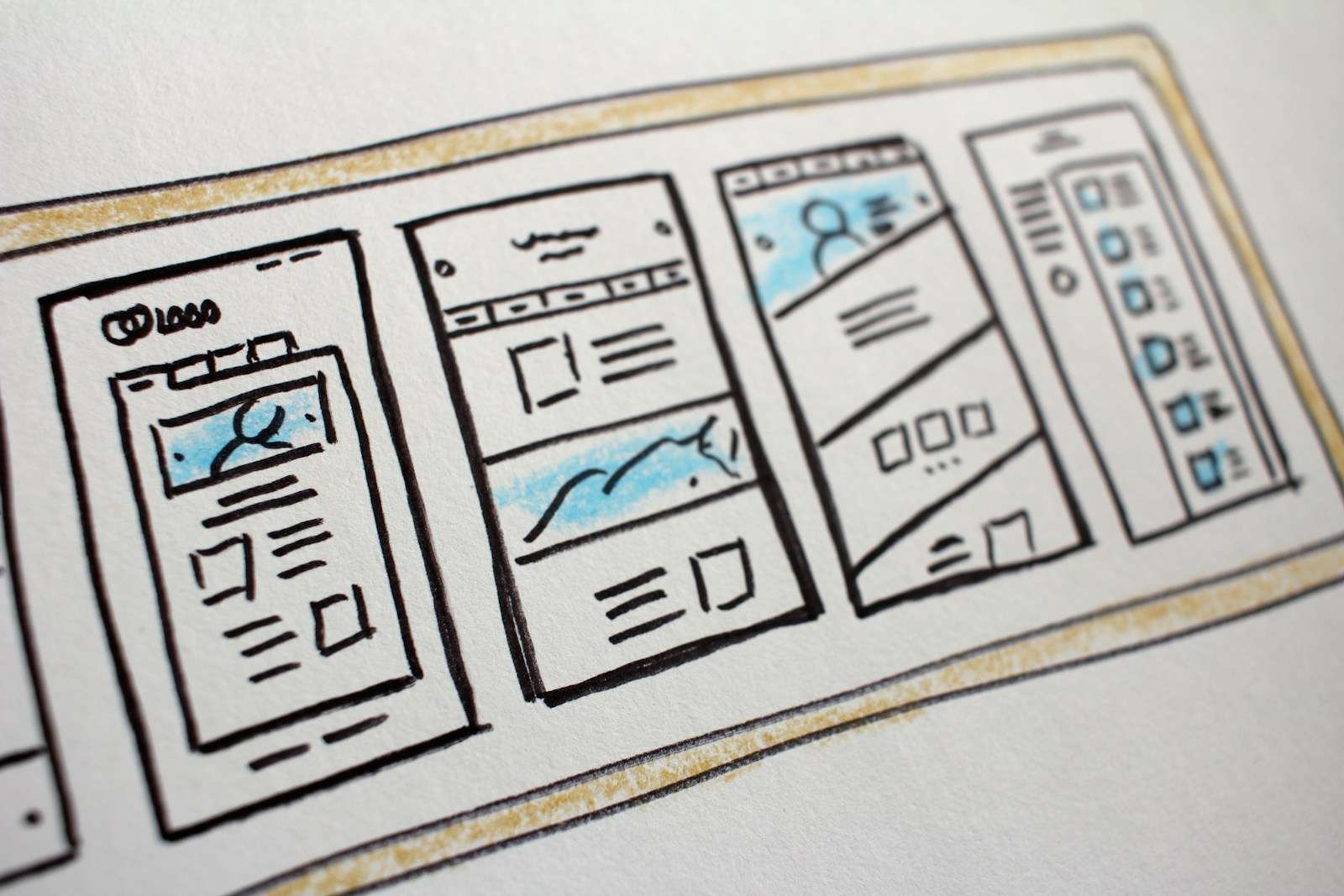Did you know that 75% of consumers judge a business’s credibility based on its website design? In Lafayette, Louisiana, it is no different, and small businesses need more than just a mediocre website. We are going to show you how to create a website that looks amazing and drives tangible results. Forget cookie-cutter templates. Your business deserves a website that reflects its uniqueness as a business. This guide provides actionable insights into web design for small businesses in Lafayette.
Define Your Website’s Purpose and Ideal Visitor
Before focusing on color palettes or page layouts, clarify your website’s goals and target audience. This groundwork is essential for a successful online strategy. Think of it as setting the compass before you set sail.
Determine Your Business Goals
Ask yourself these crucial questions:
- Do you want to generate leads through your website?
- Are you planning to sell products directly from your site using e-commerce?
- Will your website serve primarily as a source of information, boosting credibility and recognition?
- Will you use it to schedule appointments or manage bookings with ease?
Your website can handle multiple tasks. Prioritize the most important goals. A restaurant in Lafayette, for example, may emphasize displaying its menu and enabling online reservations. A consulting firm may concentrate on building trust through insightful articles and compelling testimonials from clients. Customizing your web design for small business Lafayette to meet these specific goals is critical. We always tell our clients to focus on the 20% of effort that will yield 80% of the results.
Identify Your Target Audience
Who do you envision visiting your website? Consider these aspects:
- Age range
- Geographic location
- Interests and hobbies
- Income level
- Technological skills
The better you know your audience, the easier it becomes to customize your website to their specific needs and desires. A website aimed at younger people might have a trendy and visually appealing design. A website designed for an older audience should prioritize simplicity, easy navigation, and larger text. This understanding is important for refining your web design for small businesses in Lafayette. We once worked with a local business that thought its customers were everyone. We discovered that their primary customer base consists of young professionals. We changed the color scheme and fonts, and conversions jumped 20%.
We worked with a local bakery in Spain wanting to draw in more customers. They assumed their target audience was everyone in the city. We found out that their most loyal customers were college students and young families. We revamped their website to speak to these groups, using bright colors, fun graphics, and easy social media sharing. Online orders went way up, and the brand became much stronger.
Plan Your Website’s Structure and Content
Now that you understand your goals and audience, you can map out your website’s structure and content. Think of your website as a physical building. It needs a strong base (your domain name and web hosting), a logical layout (your site design), and interesting content (your text, images, and videos). Thoughtful planning is essential for successful web design for small business Lafayette. We always tell clients to plan before they build.
Choose Your Domain Name and Hosting
Your domain serves as your website’s online address. Pick a name that is:
- Easy to remember and say
- Relevant to your business
- Available to register (use domain name registrars like GoDaddy or Namecheap to check)
Your hosting service stores your website’s files and makes them available to visitors. Find a provider that promises:
- Reliable uptime, so your website is always available
- Fast loading speeds for a smooth user experience
- Helpful customer support
- Scalability, so your website can handle more traffic
There are many hosting providers to choose from, such as Bluehost, SiteGround, and HostGator. Think about your specific needs and your budget before you decide.
Create a Site Map
A site map serves as the blueprint for your website. It shows every page and how they connect. A good site map helps users find what they need and helps search engines crawl and index your content. This is an important part of web design for small businesses in Lafayette. We have seen sites jump in Google rankings simply by fixing the sitemap.
Here is an example sitemap for a small business:
- Homepage
- About Us
- Services
- Products
- Blog
- Contact Us
Each of these main pages can have subpages. The “Services” page could have pages for each service you offer.
Develop Engaging Content
Content is very important. Good website content brings in visitors, keeps them interested, and turns them into customers. Your content must be:
- Informative and correct
- Interesting
- Well written
- Optimized for search engines using relevant keywords
Think about hiring a professional copywriter to create content that speaks to your audience. A blog is a great way to keep adding new content to your website. It also improves your SEO and gives value to your visitors. We helped an accounting firm in Santo Domingo increase website traffic by 40% in six months by adding a blog with tax advice and financial tips.
Consider these content formats for your website:
- Text: Website copy, articles, blog posts, or case studies
- Images: Good illustrations, photographs, or graphics.
- Videos: Product demos, testimonials, or how to guides.
- Audio: Podcasts or interviews.
Select a Web Design Platform and Theme
Now that you have a design and content plan, you must choose a platform and theme for your website. There are many options. Each has pros and cons. Choosing the right platform is important for web design for small businesses in Lafayette. We have seen businesses struggle because they picked the wrong platform.
Popular Web Design Platforms
- WordPress: The most popular platform. WordPress is very flexible and has a huge library of plugins.
- Squarespace: With an easy drag and drop interface, Squarespace works well for beginners.
- Wix: Similar to Squarespace, Wix has many templates and options.
- Shopify: This platform is for e-commerce. It has features for payments, product management, and order fulfillment.
WordPress is often a great choice because it is flexible and good for SEO. We frequently recommend WordPress for web design projects for small businesses in Lafayette due to its flexibility and large collection of plugins. You can read more why we avoid working with Wix and Squarespace.
Design and Build Your Website
Now that you have selected your platform, you can design and build your website. It is time to make your ideas real by adding content, customizing the design, and integrating key features. This is where the magic of web design for small businesses in Lafayette happens. This is the fun part.
Customize Your Theme
Most themes have options to change layouts, colors, fonts, and more. Try different settings to create a website that represents your brand and appeals to your audience.
Add Content
Upload the content you created earlier to your website. Make sure it is easy to read, organized, and optimized for search engines. Use headings and bullet points to make it easy to scan.
Integrate Key Features
You may want to add features to your website based on your goals. These could include:
- A contact form
- An online store
- A blog
- A booking system
- A members area
Many platforms have plugins or extensions to add these features. WordPress has plugins that handle everything from contact forms to e-commerce.

Optimize Your Website for Search Engines (SEO)
Making a good-looking website is only half the battle. You must also make sure customers can find it online. That is where search engine optimization (SEO) comes in. SEO means optimizing your website to rank higher in search results. Good SEO is very important for web design for small businesses in Lafayette. Without it, your site will be invisible.
Research Keywords
Keyword research is the base of any SEO strategy. It means finding the terms your audience uses to find businesses like yours. Use tools such as Google Keyword Planner, SEMrush, or Ahrefs to find good keywords. For a small business website in Lafayette, keywords might include “restaurants Lafayette” or “plumbers in Lafayette.”
Conclusion
In conclusion, these are several essential steps that you need to consider when you’re a small business owner looking to create an effective website while operating on a limited budget. It’s important to carefully plan and utilize various free or low-cost resources to build your online presence without overspending. However, if you find yourself in need of professional web design services to truly elevate your site, we are here to assist you and provide you with the expertise you require.
